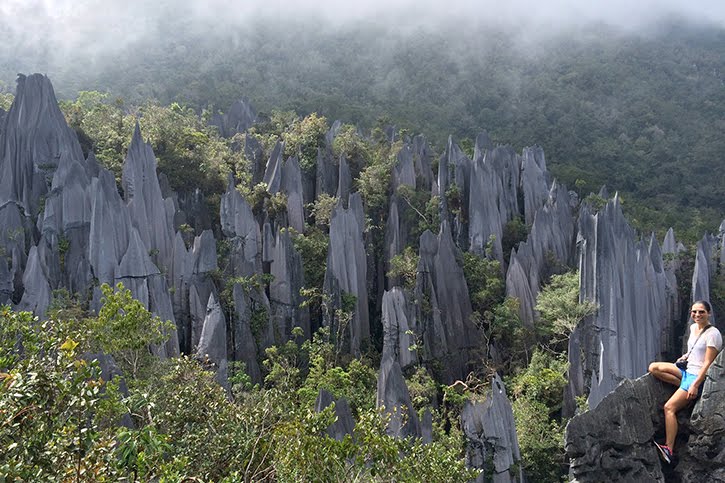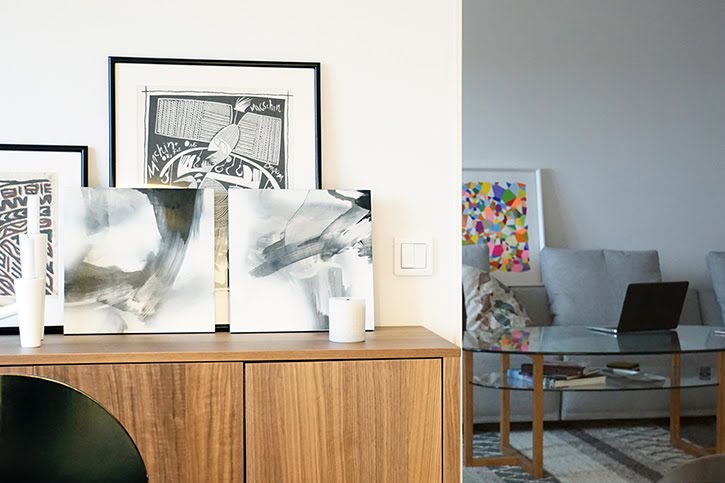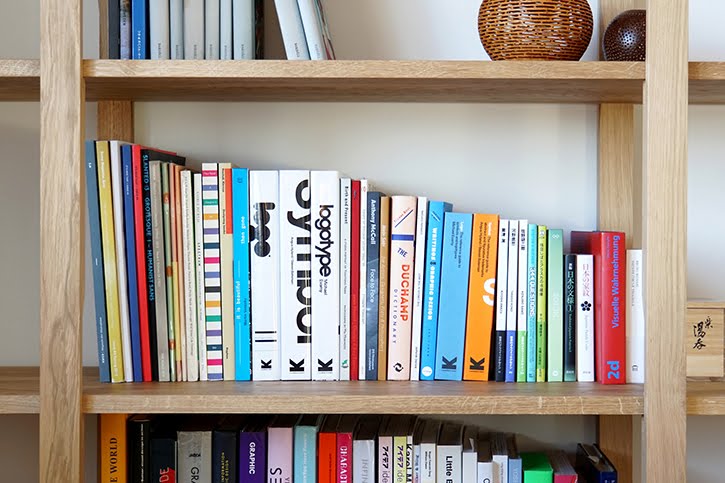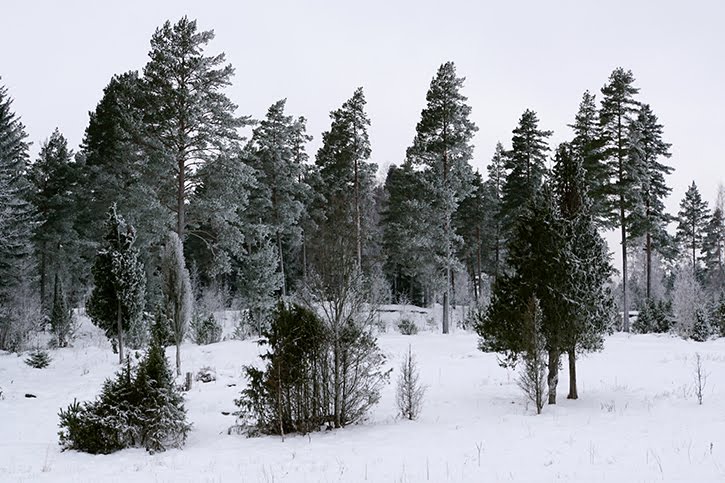Two years ago, when I left New York City, my friend Erika Nishizato also embarked on a long journey across the world. She's a kindred spirit who loves to travel and wander the world as I do. Since then, our lives have drastically changed, in ways we couldn't have imagined. With that comes daunting unpredictability but also adventure and boldness as we continue to build our "new" lives. Here, a Q&A conversation with Erika from across the world.
Angie: In 2014, we both decided to leave New York. Since then, so much has changed. Tell me about your journey the last couple years.
In the summer of 2014 a confluence of events left me at a crossroads. My 2-year design contract was ending and I’d given up the lease on my apartment, then my 3-year relationship dissolved over the course of a weekend. My first impulse was to wallow, which I indulged heartily. Afterward I acknowledged the options this clean slate left me: I could rebuild a life in the image of my old one, or I could create something new.
"I could rebuild a life in the image of my old one, or I could create something new."
For a few months I’d been saving money for a potential career change, yet a romantic vision of solo travel nagged at me. It wasn’t out of the question, I had enough airline miles to buy an “Around the World” ticket—7 stopovers to be completed within one year—but the idea left a pit in my stomach. Wandering alone for months with only myself to rely on would be challenging, and even more frightening was the prospect of facing the unknown. Still, the urge to take off grew until it no longer felt like a choice, so I booked my ticket.
I left New York In September for Sardinia, a Mediterranean island west of Italy. In a tiny rented car I spent four weeks driving to the remote corners, each day discovering new beaches down dusty roads, or hiking up mountains to ruined castles and archeological sites. Sometimes I felt spoiled—Who was I to be on this extended vacation while everyone else worked? But the guilt faded when faced with the hazards of extended travel… getting lost late at night with no GPS… minor car accidents… BEDBUGS. That first month was both wonderful and hard—it prepared me well for the rest of the journey.
In the months that followed I traveled to mainland Italy, rented an apartment in Paris and spent two weeks in Turkey before heading east to Thailand. Initially, each move made me homesick and brought into question my motivations for the trip, later on this anxiety became an expected part of the experience. By January I’d lightened my bag by two-thirds and deviated from my original itinerary, planning no more than a week or so ahead. For the first time I felt truly free and self-reliant, knowing I could go wherever I wanted, when I wanted. I used Bangkok as my home base for trips to Myanmar, Malaysia and Borneo, and eventually five weeks in Southeast Asia turned into five months.
 My second trip to Myanmar in early March led to the biggest deviation of all. It began when I was bitten on the foot by a “temple dog” at a Buddhist monastery, forcing me to return to Bangkok. During recovery I went on Tinder and matched with “Jon,” a nice-looking Swedish dentist who was on vacation in Thailand. Our first date was unconventional—we met in front of a 7-Eleven at 2am, then sat and talked at a nearby McDonalds until the sun came up. After that we were inseparable and kept in close contact after he returned to Sweden. A month later Jon returned to Asia to meet me in Bali and we decided to get engaged, to the shock of our family and friends. It was hard for people to understand our decision from the outside, but from our vantage point it made complete sense. In the most tangible way, this experience taught me that bad situations can bring good and unexpected life changes. Last September Jon and I were married at my parents’ house near Portland, Oregon, and shortly after I moved to Linköping, Sweden.
My second trip to Myanmar in early March led to the biggest deviation of all. It began when I was bitten on the foot by a “temple dog” at a Buddhist monastery, forcing me to return to Bangkok. During recovery I went on Tinder and matched with “Jon,” a nice-looking Swedish dentist who was on vacation in Thailand. Our first date was unconventional—we met in front of a 7-Eleven at 2am, then sat and talked at a nearby McDonalds until the sun came up. After that we were inseparable and kept in close contact after he returned to Sweden. A month later Jon returned to Asia to meet me in Bali and we decided to get engaged, to the shock of our family and friends. It was hard for people to understand our decision from the outside, but from our vantage point it made complete sense. In the most tangible way, this experience taught me that bad situations can bring good and unexpected life changes. Last September Jon and I were married at my parents’ house near Portland, Oregon, and shortly after I moved to Linköping, Sweden.
Angie: What are some of the biggest changes from this experience and how has it impacted the way you want to live your life? How are you adjusting?
My perspective on the way I want to live my life has changed a lot. In New York it was easy to get focused on a narrow goal or outcome. I left believing the trip would help me solve the mystery of the “perfect” career—the answer to my happiness. Traveling illuminated alternate universes. I saw people finding happy niches in obscure corners of the world, and recognized how fortunate I was to have work that allowed me the freedom to explore. These days finding the perfect job doesn’t feel as imperative as it used to. For me, a fulfilling life means balancing work with breaks for extended travel—a pursuit that makes me feel alive and grateful.
"For me, a fulfilling life means balancing work with breaks for extended travel—a pursuit that makes me feel alive and grateful."
On the weekends we would visit Jon’s family summer house and go boating on the lake, or stop to feed the pigs at a neighboring farm. We’d take evening walks, the sky remaining light late into the night.

Of course living somewhere is different than the experience of a traveler passing through. I’d enjoyed a nomadic life for over a year, but now I needed to find job and establish a new daily routine. More importantly, I had a new family and would forever have ties to this country, yet felt isolated without knowledge of the language. I’ve never been good at learning foreign languages, so it felt like an impossible hurdle.
After the wedding I had time to breathe and set my own pace. We took things slowly, spending the fall decorating the apartment and making it our own. I brought tokens from home—my mom’s paintings, the books and magazines I’d collected over the years, my jewelry boxes. I set up a home office and eased back into work, surprised to find how much I enjoyed it. After a while the language issue didn’t seem so big.
 The slower pace has allowed me to appreciate the subtleties of Swedish culture and note the mundane idiosyncrasies of daily life. These are the things you stop noticing after a while, but which make living in a foreign country so satisfying. I loved watching Greg Poehler’s series Welcome to Sweden, he captured some of these quirks so perfectly, I could relate to so many of the scenarios called out on the show. You might think being married would be the biggest adjustment, but that’s been the easiest part. When Jon and I first met I worried about losing my independence and giving up my new-found love of solo travel. When I voiced these concerns Jon assured me by saying my independent spirit was what he found most attractive. Now when we travel I usually book an extra week on my own, but it’s really nice to know there’s someone waiting at home. Angie: What are some tips on how to "design" a life that truly reflects who we are? Be authentic. One of the most important things I learned in design school was to be true to the content and authentic in my process. We were taught to avoid shortcuts—“don’t fabricate an image in Photoshop when you can capture it with a camera,” one of my professors emphasized early on. It sounds obvious to say we should build a life that’s authentic to our own interests and desires, but it’s easy to lose track of what those are when we’re constantly bombarded with outside information. It required taking time away from my normal routine to discover what was really important to me.
The slower pace has allowed me to appreciate the subtleties of Swedish culture and note the mundane idiosyncrasies of daily life. These are the things you stop noticing after a while, but which make living in a foreign country so satisfying. I loved watching Greg Poehler’s series Welcome to Sweden, he captured some of these quirks so perfectly, I could relate to so many of the scenarios called out on the show. You might think being married would be the biggest adjustment, but that’s been the easiest part. When Jon and I first met I worried about losing my independence and giving up my new-found love of solo travel. When I voiced these concerns Jon assured me by saying my independent spirit was what he found most attractive. Now when we travel I usually book an extra week on my own, but it’s really nice to know there’s someone waiting at home. Angie: What are some tips on how to "design" a life that truly reflects who we are? Be authentic. One of the most important things I learned in design school was to be true to the content and authentic in my process. We were taught to avoid shortcuts—“don’t fabricate an image in Photoshop when you can capture it with a camera,” one of my professors emphasized early on. It sounds obvious to say we should build a life that’s authentic to our own interests and desires, but it’s easy to lose track of what those are when we’re constantly bombarded with outside information. It required taking time away from my normal routine to discover what was really important to me.
"It sounds obvious to say we should build a life that’s authentic to our own interests and desires, but it’s easy to lose track of what those are when we’re constantly bombarded with outside information. It required taking time away from my normal routine to discover what was really important to me."
Appreciate the details. Being a designer means paying attention to details that often go unnoticed. I try to take note of the subtleties that make my life unique at a given point in time—a snack I like to eat, the path I take home from work, the smell of my apartment. The ephemera of daily life is what I get nostalgic for when I’ve moved on to another place.
Less is more. It sounds clichéd, but it’s really true. At my last job in New York we focused on communicating information with an economy of means—the goal was always to simplify and clarify. But this concept didn’t translate to my personal life; I went shopping every weekend for new clothes or handbags or things I “needed” for my apartment. I was shocked by the amount of stuff that had accumulated when I moved—I was literally and figuratively tethered to all this baggage. Traveling taught me how few things I needed on a daily basis, and shopping took on new significance—a purchase meant something else had to be discarded. Jon is a natural minimalist, and our apartment is super organized and efficient, so he’s helped me maintain this less-is-more lifestyle. There aren’t many places to shop in Linköping, so that helps too!
"I was shocked by the amount of stuff that had accumulated when I moved—I was literally and figuratively tethered to all this baggage. Traveling taught me how few things I needed on a daily basis..."
Don’t try to plan the outcome. The design process is all about the balance between structure and experimentation—you start with a framework of clear parameters, then you test them and break them through countless iteration. Sometimes you have to destroy everything and start over again. It can be scary and stressful, but beginning with a specific solution in mind would limit the possibilities of what could be. In our own lives it’s tempting to try to control the final outcome, but I think letting go of expectations and a willingness to take risks leads to greater happiness.
Follow your instincts.
Angie: With the passage of time, our inspirations change and evolve. What inspired you then, what inspires you now?
In New York there is something to see and do at every turn, so there’s never a shortage of inspiration. On my morning commute I’d enjoyed getting glimpses of new shows in the Chelsea galleries, and I went to museums and films on a regular basis. But my greatest inspiration was walking around the city at night, usually after having cocktails with friends. People laugh when I tell them that one of my favorite places to go was Times Square, but I loved sitting on the bleachers among the tourists. They looked so joyful and I felt I could see New York through their eyes.
My daily life in Linköping is much quieter, so in some ways my senses are more acute. For work, I’ve turned to my old art and design books for the first time in years, and started adding to my collection again. Close to home, I find the bucolic landscape most inspiring. We can drive ten minutes in any direction and be surrounded by oak forests and centuries-old farms with goats and tiny horses. Last summer I was struck by how much more vibrant and crisp and BIG the sky looked, set against the low rolling hills. Most days would end with a dramatic sunset that looked like a Constable or El Greco painting.
Travel is still important for both of us, so we try to take weekend trips as often as possible. We’re lucky to live relatively close to so many great cities, our current favorite is Berlin.
+ Erika Nishizato is an Information Designer with a background in graphic design. (IG: @tunnelandbridge)




















A gutsy journey with a happy ending. I enjoyed the story and the photos that helped to bring the journey alive. Thanks
Very inspiring. And awesome reminders peppered throughout. I agree, I’ll probably revisit and read this a few more times.
What a beautiful story. I loved this one! Life is amazing in that it takes you places you would have never imagined. And just when you think you’ve hit a low point, one turn can bring such wonderful changes and joy that will last a lifetime. Thank you for this wonderful read. I have a feeling I will come back to it again!